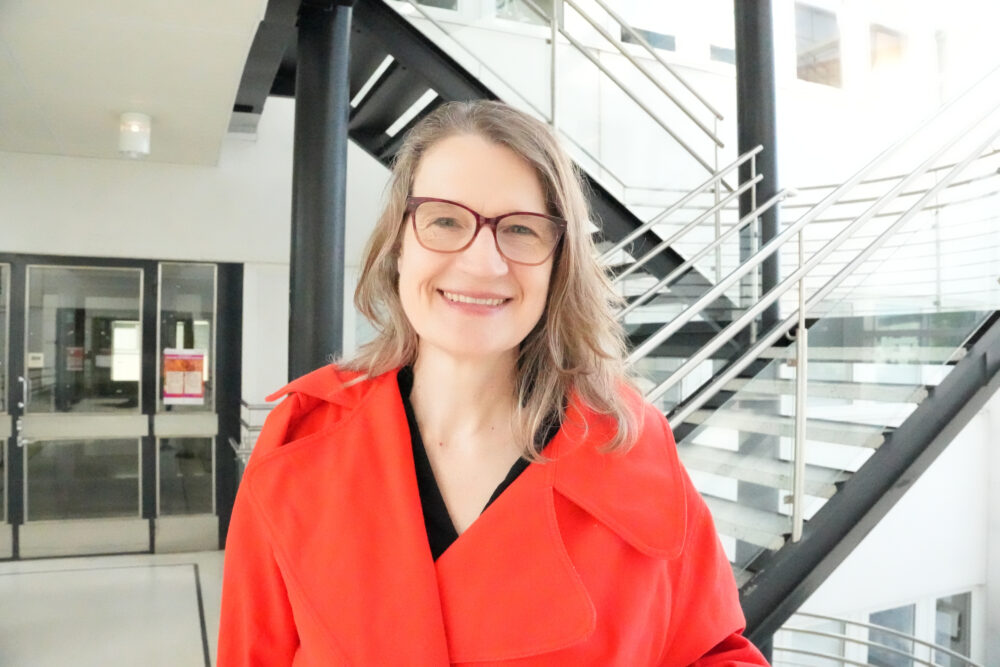Professor Gwendalyn Randolph and the power of fundamental research
InFLAMES Visiting Professor Gwendalyn Randolph says her success as a researcher is based on the fact that she and her team conduct both basic and disease-oriented research at the same time. – I believe we cannot understand diseases without understanding the fundamental processes underlying them, she says. If Randolph had to summarise her research and interests in two words, it would be interorgan trafficking.

In an interview with Gwendalyn Randolph, she recalled how, as a young biology student, she once waited in a self-service laundry room for her washing to be done while reading a book on the movement of leukocytes in tissues. She found the book’s description of how leukocytes crawl between endothelial cells through blood vessels and into tissues fascinating and helped to set out a path of interest to pursue.
Randolph has since become a widely respected researcher, specialising not only in cellular trafficking but also in the passage of lipoproteins through tissues and the biology of blood and lymphatic vessels. Along the way, she became deeply involved in cardiovascular disease, among others, from which she has since moved on to other inflammatory diseases.
Today, Randolph’s group at the Department of Immunology and Pathology at the University of Washington is interested in inflammatory bowel disease (IBD) and has focused on the interaction between the intestine and liver.
– The liver is the only organ in our body for which the bulk, about 75 percent, of the blood comes from another organ, the intestine. Blood is brought to the liver by the portal vein (vena portae hepatis), and the blood contains, among other things, nutrients absorbed from the digestive tract.
HDL cholesterol protects the liver
The transport of nutrients through the liver is well known, but less attention has been paid to the fact that the liver also functions as part of the immunological system. The liver filters out microbes, which are abundant in the intestine, thus protecting the bloodstream from bacteria, among other things. But in protecting the body, the liver itself is exposed to a large numerous inflammatory factors.
With this information as background, Professor Randolph’s group established that the gut intestine produces HDL cholesterol for a reason: HDL cholesterol protects the liver from constant inflammatory attacks.
The fact is that wherever there are many bacteria, there are also many lipids because the bacterial cell wall contains lipids, including lipopolysaccharide (LPS). The detection of LPS by the immune system induces inflammation, in part because its presence can indicate bacteria.
HDL, especially the form enriched in the portal venous blood travelling between the gut and liver, is higly effective in neutralising bacterial LPS, i.e. it prevents LPS from signalling and causing inflammatory reactions in the liver.
A drug that can increase HDL?
However, what happens if large parts of the intestine have to be removed? In premature babies, we sometimes see severe intestinal disease that causes inflammation, damage, and even necrosis of the intestinal wall, requiring surgically remove parts of the small intestine. These children are at high risk of developing liver failure. These conditions are referred to as short bowel syndrome. Other patients can develop short bowel syndrome and also present as persons at risk, such as after the removal of long segments of the intestine for other reasons like IBD and trauma.
Professor Randolph’s team discovered in animal models that HDL protects experimental animals from the liver complications of short bowel syndrome. They will continue their research, with the goal of developing a drug that increases HDL and helps patients.
Randolph says her team studies on the liver-gut connection are a model of how organs interact with each other. The trafficking of cells and molecules not only has a local effect, but what happens where they end up is also important.
– I believe very strongly in the power of fundamental research to understand a process in part ‘just because’, but at the same time, our disease focus is always there as well.
– For me, having projects that are classified as basic, fundamental biology alongside those that are translational work well, and I would argue that it is also a kind of survival and differentiation skill for remaining in a competitive field. Because it is easier for research funders, for example, to understand research that also has a clinical dimension, even when we are asking for resources to understand it just from a basic perspective professor Randolph indicated.
Gwendalyn Randolph visited InFLAMES in June 2024.
